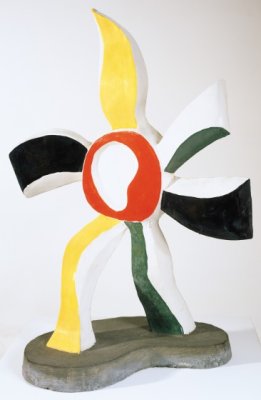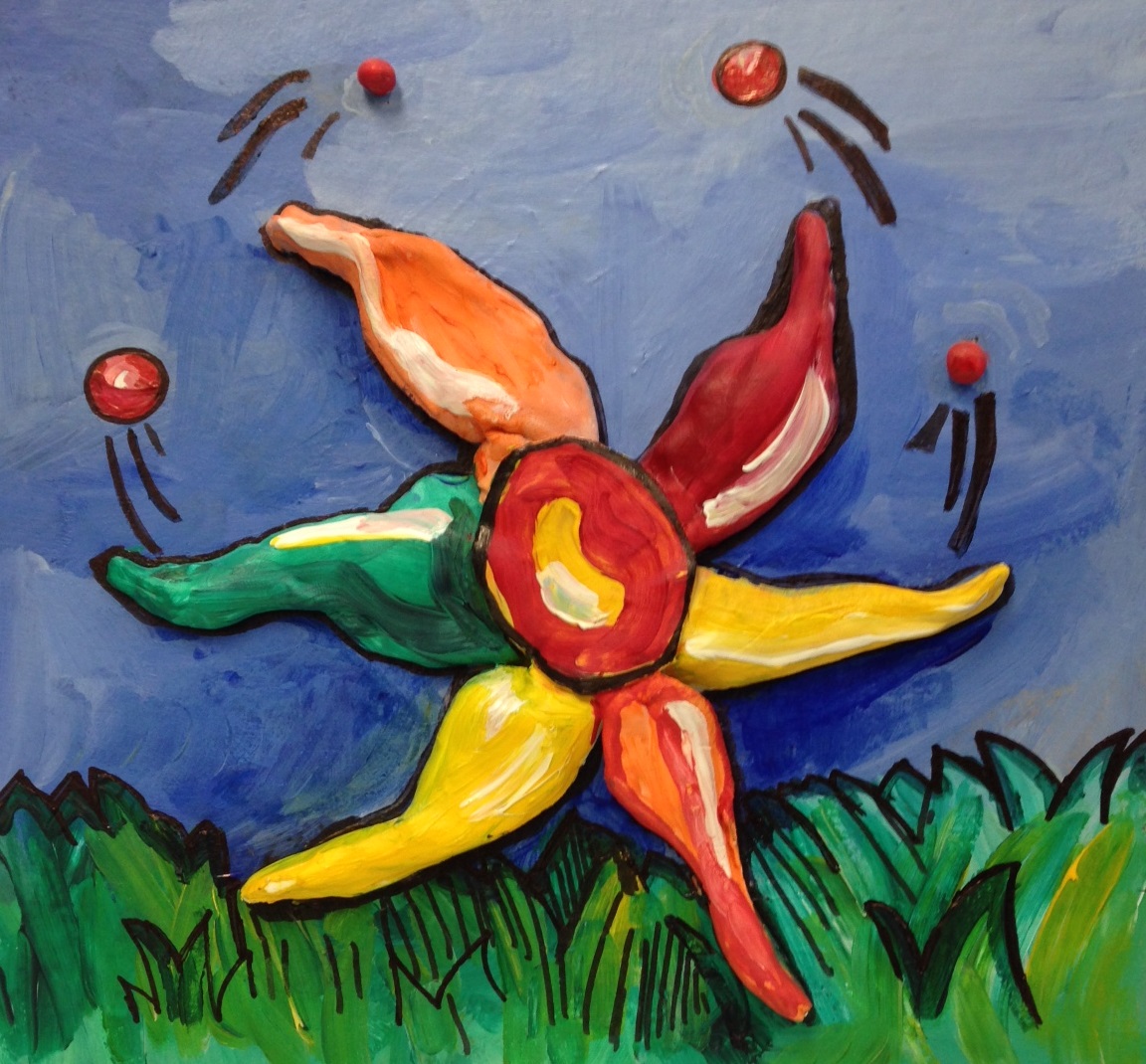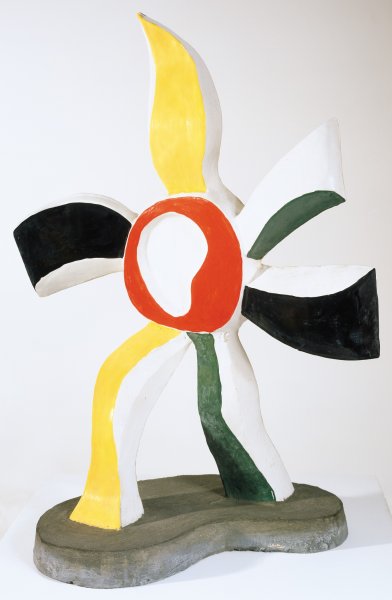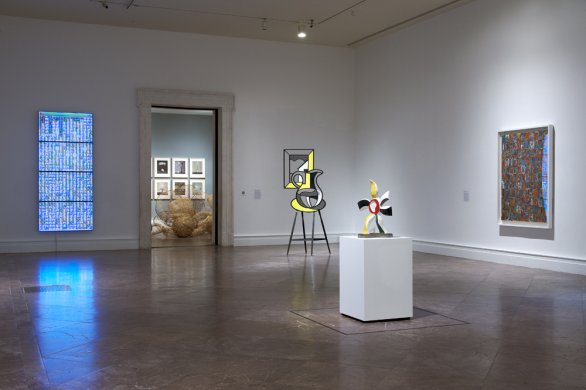About the Artist
Fernand Léger (la-ZHAY) was born in 1881 in Normandy, France. Originally trained as an architectural draftsman, Léger moved to Paris in 1909. After his experiences in the Engineer Corps of the French Army during World War I, his painting style was influenced by both modern styles such as Cubism, and by his interest in machinery and an industrial utopian society. Léger became known for his distinctive paintings using a polished-looking, machine-like tubular treatment of all forms, including the human figure. In his work, Léger favored the use of primary colors and bold forms. Léger moved to the United States during World War II, but returned to France in 1945, and concentrated on his lifelong effort to integrate architecture, painting, and sculpture. From that point on, he primarily created monumental art, stained glass, mosaics, and murals.
About the Art
The Walking Flower, 1951, is one of only a few freestanding sculptures that Léger made during his career. It was created in Biot, France, where he moved in 1949 and began working in ceramics. The cheerful-looking flower has six petals. The flower is shown posed in mid-stride on two petals, provoking debate as to which of the other four petals might be arms or a head. The sculpture is painted with five glazes on the front—yellow, red-orange, green, black, and off-white. The design on the back is similar, but painted in black and off-white only.



